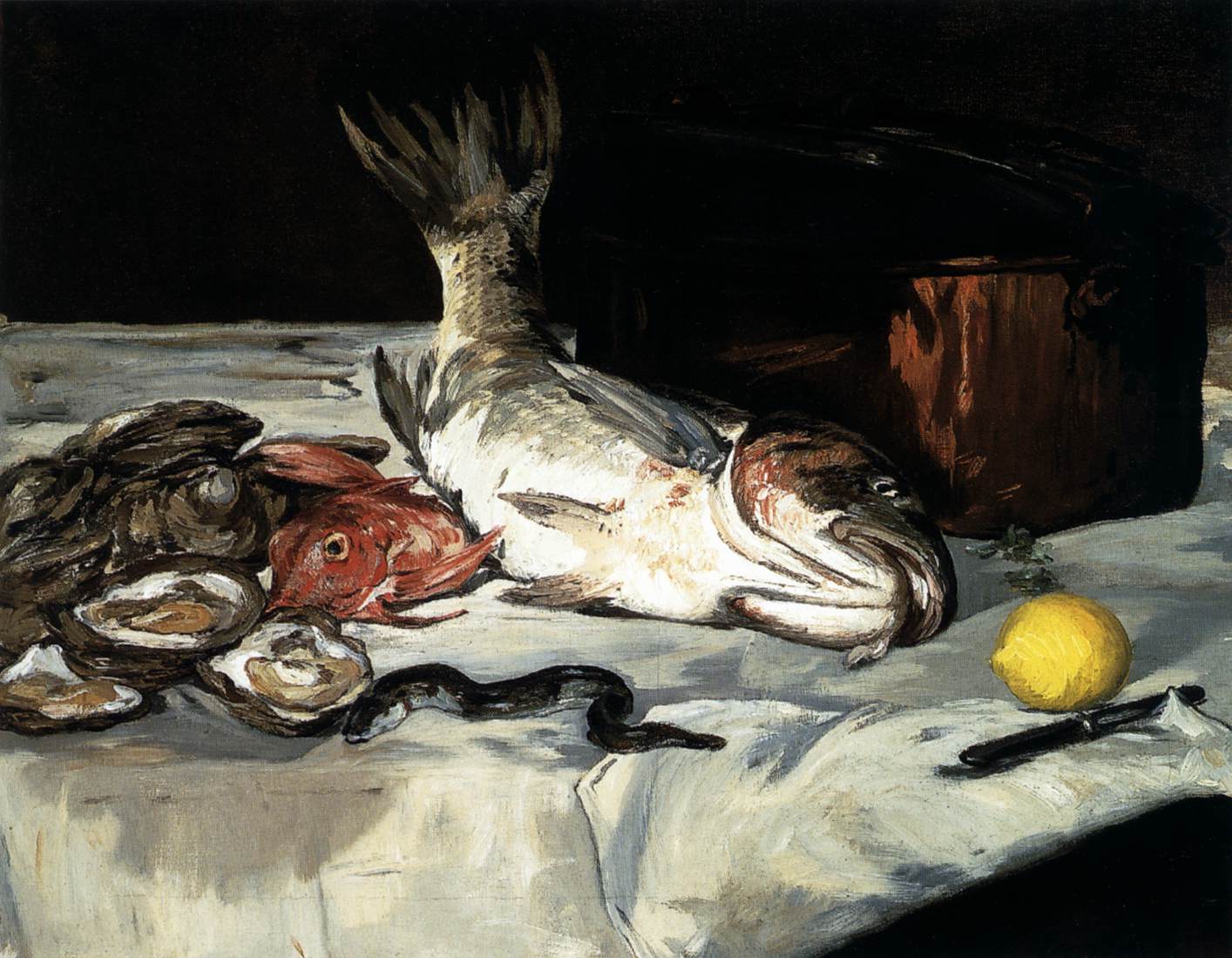Description
Edouard Manet's Still-Life with Fish painting is a masterpiece of 19th century French realism. The composition of the painting is impressive, with a variety of objects carefully arranged on the table. The attention to detail in every element of the painting is impressive, from the way the fish are placed to the texture of the cloth on the table.
Color is another interesting aspect of this painting. Manet uses a bright and vibrant color palette, with shades of red, yellow and green contrasting beautifully against the painting's dark background. The light coming through the window illuminates the objects on the table, creating an effect of shadows and reflections that adds depth and realism to the painting.
The story behind this painting is also fascinating. Manet was a lover of food and fishing, and this is clearly reflected in this work. The painting was created in 1864, during a period when Manet was experimenting with realism and the loose brushwork technique. Although the painting was criticized by some art critics in its day, it is today considered one of Manet's most important works.
A little known aspect of this painting is that Manet used an unusual technique to create it. Rather than paint directly on the canvas, Manet first created a series of detailed sketches and drawings of the objects on the table. He then transferred these drawings to canvas and used them as a guide to paint the final work.
In short, Edouard Manet's Still-Life with Fish is a masterpiece of 19th-century French realism. The composition, color, and attention to detail are impressive, and the story behind the painting is fascinating. It is a work of art that continues to captivate viewers today.

